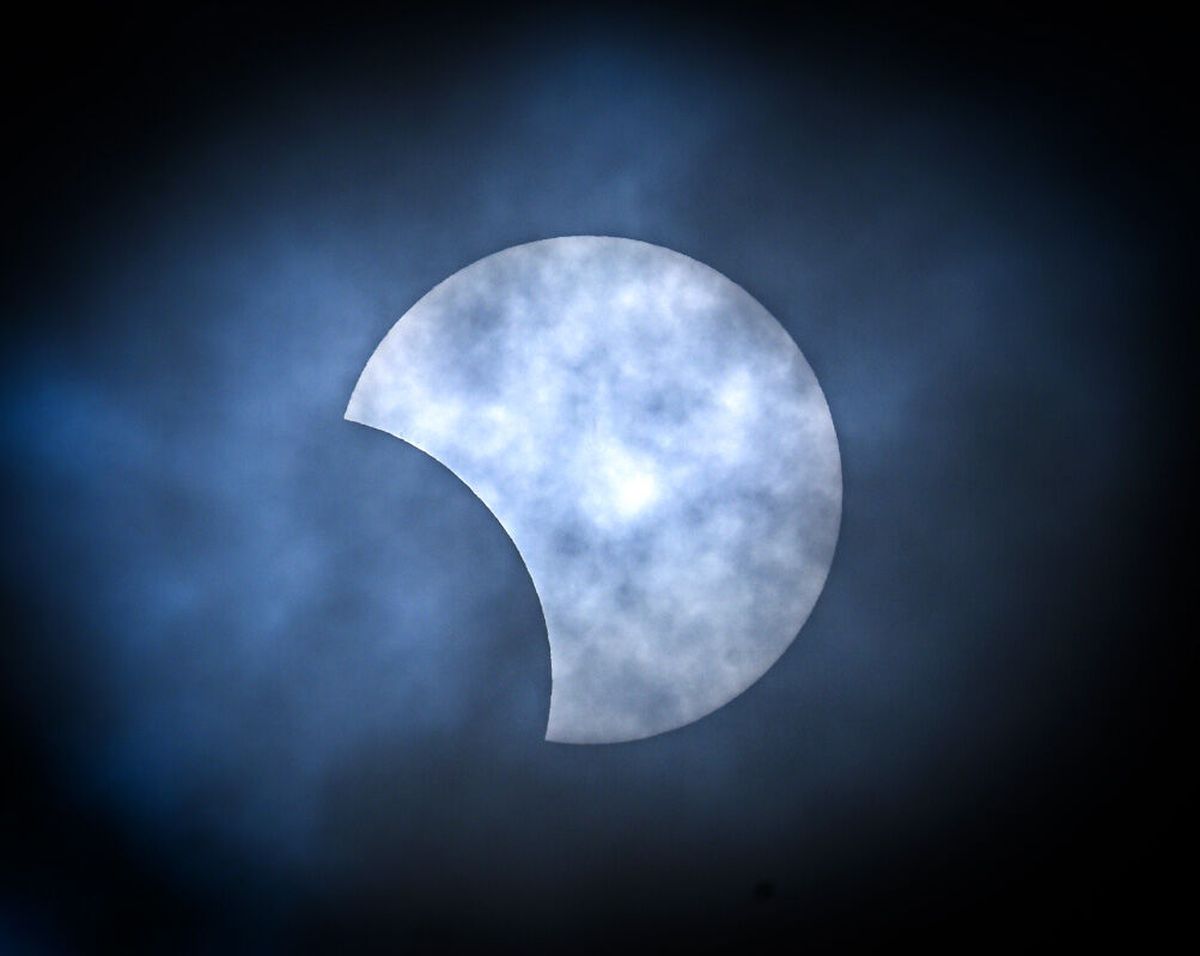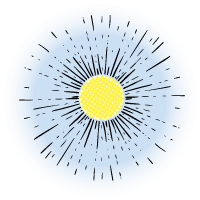Stevens Elementary teacher buys eclipse glasses for fifth graders to watch partial solar eclipse

For millennia, humans have dropped everything to witness the blackening of the sun during a solar eclipse.
On Monday, the fifth-graders at Stevens Elementary became the latest to be captivated. Teacher Heather Alford bought 50 eclipse glasses and surprised both classes of fifth-graders with a viewing during their recess time while the rest of Stevens students had recess indoors that day, since they didn’t have the specialty lenses that make the sun safe to view without risking ocular damage.
“I just like making sure they have every opportunity when there’s really cool events, this was a chance at something that doesn’t happen very often,” Alford said.
The eye damage was a risk fifth-grader Shiyalynn Dauteuil considered taking as she gathered with her peers on the blacktop Monday. Though impressed by the view of the eclipse through protective eyewear, she desperately wanted a peek unfiltered.
The sun lured her like a siren, though she mustered the restraint to resist staring directly into it.
“You would go blind, but I just wanna look at it,” Shiyalynn said, standing stiff as a board with her back to the sun as fifth-grader Kassaundra Steele held her palm over her friend’s eyes lest the temptation overtake her.
The gaggle of students erupted into squeals and gasps when they first saw the moon consume nearly 30% of the sun through their goggles.
The consensus? “It’s cool,” many said.
“It looks like someone took a bite out of cheese,” Kassaundra said.
“Or pie,” Shiyalynn countered.
“I thought it was something,” Fifth-grader Kade Strong said. “I used to think the moon was made out of cheese.”
He pondered all he’s learned since witnessing the last solar eclipse in 2017, when he was pre-school age and Spokane viewers could see the moon blanketing 90% of the sun.
While teachers didn’t plan lessons to directly coincide with the eclipse, space education was in their curriculum earlier this year. This was a chance for students to witness what they’ve been taught in real life, a more “exciting” experience than learning it in a classroom, science specialist teacher Mark Thibodeau said.
“It’s when the sun is equal with the moon and the earth,” Fifth-grader Rykar Long explained.
Alford surprised her students with the glasses that morning. They originally were disappointed, thinking they’d be missing the phenomenon. This way, she said they got to revel in the rarity still with a level of childhood wonder.
“It doesn’t happen for another 20 years, so they’ll be, like, 30,” she said.
“Honestly, I think it’s very fortunate that we were able to be this age at this time just to see it,” Kassaundra said.
While Alford was pleased seeing her class marvel at the cosmic wonder, it was at least partially self-motivated, she said.
“Oh, I didn’t want to miss it either,” she laughed.
Leading up to visibility in Spokane, Alton played for her class NASA’s live footage showing the moon enveloping the sun. She dressed for the occasion, donning an eclipse shirt and planetary earrings.
“I told my class if I wasn’t teaching, I’d probably do something with space, because I love everything to do with space. I’m a nerd that way,” she said, already dreaming of the next solar eclipse in 2044. By then, she’ll likely be retired and can travel wherever totality may occur, she joked.
“I like making learning fun,” she said.
“I’ll most likely remember this, ‘cause this is a very eventful day,” Kassaundra said.
